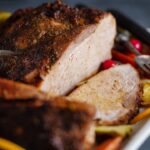Tree nut allergies are a significant concern for individuals who suffer from food allergies. However, there are several misconceptions surrounding tree nut allergies and cross-reactivity that often lead to misunderstandings and unnecessary fears. In this article, we aim to debunk some of the most common misconceptions associated with tree nut allergies, clarifying important aspects and providing a more accurate understanding of this condition.
Misconception 1: All tree nuts are the same
One of the most prevalent misconceptions is that all tree nuts trigger the same allergic reaction. While tree nuts belong to the same family, they are diverse in terms of their protein composition. Examples of tree nuts include almonds, cashews, walnuts, pistachios, and hazelnuts, among others. Each nut contains distinct proteins that can trigger unique allergic responses. Therefore, an individual allergic to one type of tree nut may not necessarily be allergic to all tree nuts.
Misconception 2: Tree nut allergies are the same as peanut allergies
Peanuts, which are legumes, are often mistakenly associated with tree nuts. However, peanuts are not tree nuts but rather belong to the legume family, along with beans, lentils, and soybeans. While peanut allergies can coexist with tree nut allergies, they are distinct entities. It is possible for an individual to be allergic to peanuts but not tree nuts, or vice versa.
Misconception 3: Cross-reactivity between tree nuts is universal
Cross-reactivity occurs when the proteins in one tree nut resemble those in another, leading to an allergic reaction to both. However, cross-reactivity is not universal among all tree nuts. For instance, individuals allergic to cashews may not necessarily be allergic to almonds or other tree nuts. The extent of cross-reactivity varies from person to person and depends on individual sensitivities.
Misconception 4: Avoiding all tree nuts is necessary
Many people believe that individuals with tree nut allergies must avoid all tree nuts completely. While it is crucial to avoid the specific tree nuts to which an individual is allergic, it is not necessary to eliminate all tree nuts from their diet unless directed by a healthcare professional. With accurate allergy testing, it is possible to identify specific tree nuts that trigger an allergic reaction, allowing individuals to consume safe alternatives and enjoy a varied diet.
Misconception 5: Seed allergies and tree nut allergies are the same
Seeds, such as sesame seeds, sunflower seeds, and poppy seeds, are often mistaken for tree nuts due to their small size and similar culinary uses. However, seed allergies are distinct from tree nut allergies. Although some individuals may have allergies to both, there is no inherent cross-reactivity between tree nuts and seeds. It is essential to differentiate between the two and seek appropriate medical advice to accurately diagnose and manage allergies.
Tree nut allergies are a complex and often misunderstood condition. By debunking common misconceptions, we can provide accurate information and foster a better understanding of this allergy. Recognizing that different tree nuts elicit distinct allergic responses, understanding the difference between tree nuts and peanuts, and acknowledging that cross-reactivity is not universal are essential steps in managing tree nut allergies effectively. Consulting with healthcare professionals, undergoing appropriate allergy testing, and following personalized dietary recommendations are crucial for individuals with tree nut allergies to lead safe and healthy lives.








